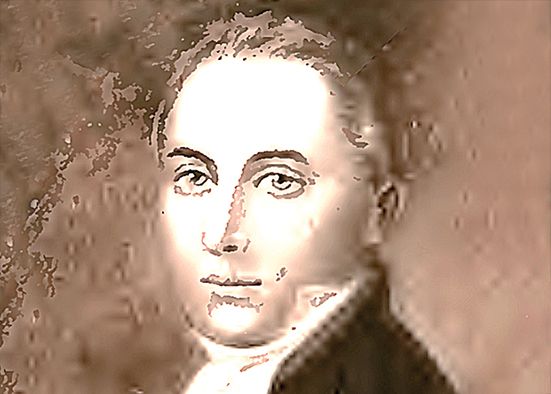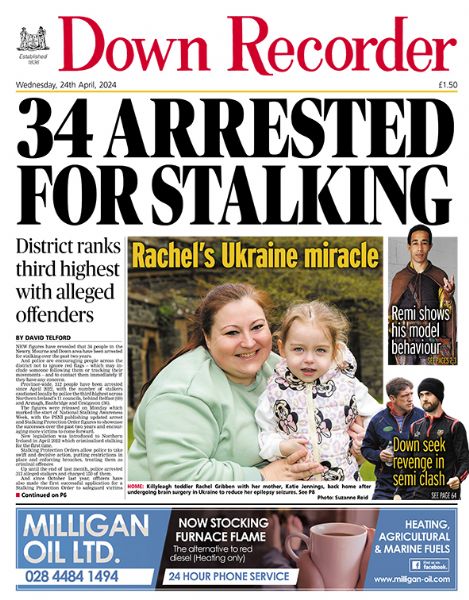Trials and tribulations of preaching in Irish
Trials and tribulations of preaching in Irish
5 January 2022

RADEMON Non-Subscribing Presbyterian Church was rebuilt by Dr Moses Neilson in 1787.
As well as preaching, Dr Neilson ran a famous school, teaching Classics to prepare students for university entrance in Scotland. He also taught commercial subjects like arithmetic and bookkeeping, for use in commerce and industry.
Dr Neilson and his clergymen sons were notable for their warm cross-denominational outlook.
Fr Luke Walsh, PP in North Antrim, near Ballycastle, spoke highly of his old Kilmore tutor: “I was educated by a Presbyterian clergyman, a man of as great moral worth and sterling integrity as Ireland could boast of.”
In 1825, as Bishop of Down and Dromore, William Crolly described Rev James Neilson of Downpatrick as “one of the most liberal and respected clergymen in Co Down”.
Around 1784 Moses began compiling an Irish grammar, later assisted by his son William. In their pursuit of Irish studies, the two Neilsons collaborated with Patrick Lynch, principal of a distinguished Irish and Classical academy in Loughinisland, six miles away.
In March 1797 William Neilson was installed as minister of Dundalk Presbyterian Church. This was a perfect fit for his developing academic interests. Attached to the Dundalk congregation was a colony of Gaelic-speaking Scots Presbyterians living in Ballymascanlon.
Originally from Argylle, they had fought for King William in 1690. Hence it was a standing requirement that the congregation’s clergy be fluent in Irish.
William thrived in Dundalk. In the late 1700s Irish was still the first language with large parts of the population in Down and Louth (it wasn’t until the 1800s that English would become dominant). He preached widely in Irish. In July 1805 he went on a preaching tour of Ulster, achieving wide popularity.
Rebellion
Back in Co Down, and during the 1798 Rebellion period, his preaching activities on one occasion brought him into collision with the military authorities. His father was actually Moderator in the year of the Rising.
Dr Moses needed permission from General Nugent to hold the General Synod (later known as the General Assembly) in Lurgan that August. One Sunday in 1798 his son William was invited back to his father’s church, to preach in Irish. The event generated considerable interest, and the church was packed.
The authorities were nervous in the wake of the rebellion and news of this unusually large assembly soon reached official ears.
Halfway through the sermon a party of yeomen entered the church. With no space left to seat them, they occupied the twin staircases leading up to the pulpit. When William had finished preaching they promptly arrested him, and seized the of his sermon.
The soldiers involved were likely from the Kilmore Yeomanry. Their Lieutenant at the time was Charles Hamilton, William Strain of Kilmore was a sergeant, and Patrick Soy of "Tollinagrew" a private.
They marched William all the way to Down Gaol in Downpatrick, newly opened on the Mall in 1796 (the building now houses the Down County Museum). Their arrival likely caused some consternation with the Gaol Governor, because the Neilson clergy were widely known to be loyal to the Crown.
Rev William bailed by Rev James
Scrambling to smooth over this military faux pas, the Governor sent across town for James Neilson, brother of the prisoner, and minister of the nearby Stream Street Presbyterian congregation. The Rev William was then bailed into the custody of the Rev James,
with instructions to appear in court next day.
Next morning the magistrate encountered a difficulty — he couldn’t understand the manuscript of William’s sermon, preached in Irish the day before. William helpfully offered to translate. It transpired the contents were innocuous, and the prisoner was promptly released. The details of this intriguing episode were recorded a century later by a Neilson descendant; (Dr Joseph Nelson, Belfast Literary Society Memoirs, 1902).
Academic career
In Dundalk William ran a Classical and mercantile academy similar to his father’s. In an astonishing burst of creativity, he continued to develop his skills as a linguist.
In 1804 he published Greek exercises in syntax, ellipsis, dialects, prosody and metaphrasis. In recognition of this, Glasgow University awarded him an honorary DD in 1805. In 1806 he was elected Presbyterian Moderator. In 1808 he published Introduction to the Irish language, on the basis of which he was elected MRIA in 1808.
There were a number of advantages in learning Irish, William explained. For academics, it gave essential insights into other European languages. And for the wider population, it enabled competent communication with those large sections of the population whose first language was still Irish.
In contemporary Ireland, he asserted, clergymen, lawyers and farmers could not conduct their business properly without a knowledge of Irish.
Paradoxically, the subjects taught in schools run by the Neilson clergy, and others, eventually undermined the use of Irish nationally. The Industrial Revolution was in full swing, and employment opportunities in industry and commerce were exploding.
For those without a knowledge of English, Irish-only fluency was becoming an overwhelming disadvantage. When the new national school system was instituted in Ireland in 1831, teachers knew that English was now the essential passport to wider employment.
The great Daniel O’Connell ruefully acknowledged the new reality. “Although the language is associated with many recollections that twine round the hearts of Irishmen, yet the superior utility of the English tongue, as the medium of all modern communication is so great, that I can witness, without a sigh, the gradual disuse of Irish.”
At that time there were a number of varieties of Irish, but under the new dispensation the vernacular spoken in East Ulster eventually became extinct. Fortunately William Neilson preserved many Co Down examples in his 1808 Grammar. In the words of his descendant Joseph Nelson, William’s “dialogues and familiar phrases, which form the second part, are a complete guide to the ideas as well as the phrases of the peasantry”.
Untimely death
In 1818 William was appointed professor of classical languages and Hebrew at the Belfast Academical Institution. In April 1821 he was elected professor of Classics at Glasgow University. However, he had contracted rheumatic fever, and died on the 26th of that month, aged only 47. He was buried in the family vault close to the west gable of his father’s church in Rademon.
A full colour pamphlet based on this article has been produced by Rowallane and Slieve Croob Community Group, to accompany Joyce Gibson’s ongoing Irish language classes in Ballynahinch Market House.

